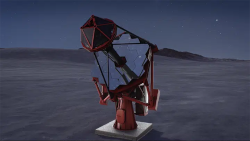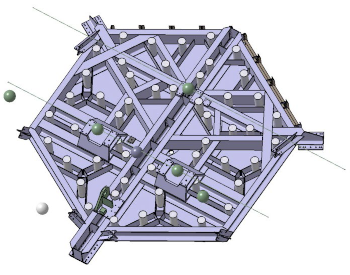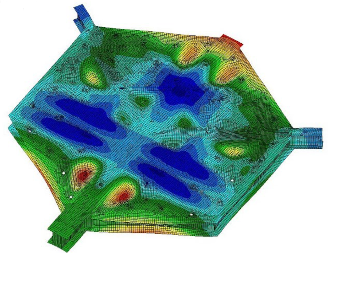
Le réseau CTAO (‘Cherenkov Telescope Array Observatory’) sera la prochaine génération de télescopes Cherenkov et succédera ainsi aux réseau HESS, MAGIC et VERITAS, opérés par des collaborations internationales. Les phénomènes étudiés par ce réseau (trous noirs supermassifs…) seront parmi les plus énergétiques de l’univers. Par rapport à ses prédécesseurs, il proposera un gain d’un ordre de grandeur en sensibilité, un élargissement du domaine spectral observable de quelques dizaines de GeV à 300 TeV et une amélioration de la résolution angulaire à environ 2 minutes d’arc. Le CTAO fait partie des très grandes infrastructures de recherche (IR*) au niveau national et est classé sur la liste européenne ESFRI.
Le réseau CTAO sera formé de sous-réseaux de télescopes de différentes tailles : les LST (‘Large-Sized Telescopes’, dont le miroir primaire mesure 23 m de diamètre), les MST (‘Medium-Sized Telescopes’, dont le miroir primaire mesure 12 m de diamètre) et les SST (‘Small-Sized Telescopes’, dont le miroir primaire mesure 4 m de diamètre). Bien que ces télescopes soient répartis sur deux sites dans l’hémisphère nord et dans l’hémisphère sud, les SST ne seront installés que dans l’hémisphère sud sur le site CTA-S situé dans les Andes chiliennes dans le désert de l’Atacama à proximité des sites de l’ESO du VLT et du futur ELT.
Une équipe de l’UNIDIA, en collaboration avec une équipe scientifique du LUX et avec le soutien du CNRS, est impliquée depuis 2011 dans les études de développement des SST. Ces études ont permis le développement et la construction sur le site de Meudon d’un prototype télescope Cherenkov (pGCT) dont le concept optique à deux miroirs est basé sur le concept Schwarzschild-Couder. Depuis 2021, l’UNIDIA et le LUX représentent l’Observatoire de Paris – PSL et le CNRS dans le consortium international CTA-SST. Ce consortium, piloté par l’INAF, vise à fournir, en tant que contribution en nature, 37 SST en configuration alpha au CTAO. Le savoir-faire d’UNIDIA est mis à profit dans ce projet puisque son équipe technique est positionné à des fonctions de gestion de projet, de responsable assurance produit et RAMS, d’ingénieur système et d’ingénieur AIT/V et a également été impliquée dans des développements mécaniques. Le bureau d’études d’UNIDIA a en effet conduit l’optimisation du Dish M1 du télescope, structure maitresse qui supporte l’ensemble de la structure optique (miroirs M1 et M2, caméra), grâce à une méthode basée sur l’utilisation d’outils d’optimisation topologique. La production des télescopes financés par la France débutera fin 2025 et leur livraison sur le site CTA-S s’étalera entre 2026 et 2028. Ces activités seront assurées par un industriel sélectionné à l’issue d’un appel d’offres, lancé fin 2024 avec le soutien du CNRS.
Optimisation du Dish M1 du télescope CTA-SST. (gauche) : Vue arrière CAO de la structure mécanique et (droite) Déplacements induits par la gravité calculés par analyse aux éléments finis lorsque le télescope pointe à l’horizon.


En savoir plus : https://www.ctao.org/

